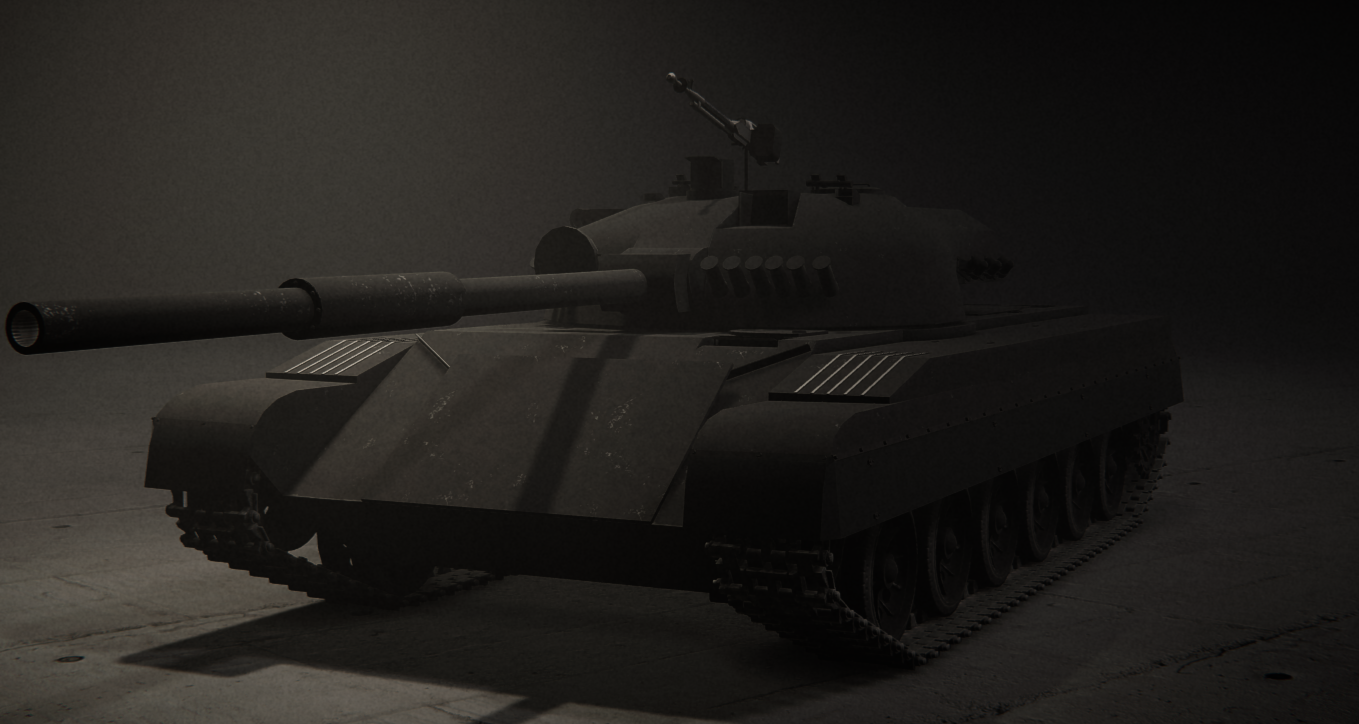The D-70, known by its GRAU index as "Object 20" formally entered service in Dosland's army on the 5th of February, 1969. The tank was designed by the OKB-710 bureau, lead by Aleksandr Putyinov and built at Tabrinskiavtozavod. The D-70 remains in service until today, still being maintained by Tabrinskiavotzavod(TAZ), despite production ending in 1992

In total between the years 1969-1988, 14,284 "D-70" models of all variants were built, making it among the most produced tanks in the world, narrowly beating the D-50.
The D-70 was since its inception, intended to be the primary MBT of Doslands armoured formations, and would form the bulk of tanks present in the Zavodski theatre. First reaching the 1st tank army in November of 1969, with the 14th Guards Tank Division, 164th Guards Tank Regiment being the first to recieve them, with testing beginning immediately. Although being an incredibly new design, first impressions were generally positive. A memoir written by Lieutenant Daviskyii Sokolov reads the following:
A severe drawback seen in numerous letterings is the loss of the 4th crew member. With an incredibly complex machine, even 4 on maintainence would have been precarious, the situation with 3 would be unmaintainable.
The history of the D-70 starts further back, with its precursor the Object 196. On April 23rd 1966, Minister of the Interior Department of Military Affairs issued directive "126.493A", and work begun being drafted in numerous design bureaus across Dosland. This directive led to numerous other designs, such as Object 714 and Object 470, however Object 196 was the most influential in relation to the D-70. Object 196 was designed by the OKB-550 bureau, who was lead by the known designer Anton Orlov. Intended to be a sort of "super D-50", the Object 196 can be further traced back to experimentation on the Object 19 design pictured below.

The object 19 featured a new turret with a bustle-style autoloader, the 115mm A-62T cannon, a V-42 engine producing 700hp, a new transmission, and a new suspension system. The new turret housed the TGDN-4 gunner sight, and the TCMS-2 commanders optic. It utilised the new "Razvedka" fire control system, with the 2E15 "Zhelti" duel-axis stabiliser
The TGDN-4 gunner sight was among the most advanced sights installed in a tank at the time, developed by POMZ for the Object 19 specifically. The sight is independently stabilised in the vertical plane, with a minimum laying speed of no more than 0.05 degrees per second and the maximum is no less than 3.5 degrees per second. The vertical stabilizer of the main gun is slaved to the sight via a rotary sensor on the cage. The accuracy of the vertical stabilisation, measured by the maximum osciliation in the range of vertical motion is measured at 0.32 mils. Based on testing of the 2E15 stabiliser, which was rated at a speed of 30 km/ph, it is assumed the vertical stabiliser was also tested under the same conditions.
The sight assembly is connected to the roof via internal bolts which faciliate quick installs and disassembly in the factory.
The optic has a fixed 8x magnification in the day sight, and a fixed 4x maginifaction in the night sight. An 8x magnifaction allows for tank-like targets to be identified from between 4-5km and a lighter vehicle from up to 6km. In theory, this would allow the gunner to identify and track a target from beyond the main gun's maxiumum effective range in ideal, optimal conditions. In practise, external elements may obscure vision, or an enemy tank may be hull down limiting its silhouettes, so for this reason a high powered magnified optic is needed for combat distances.
In terms of scanning capability, the TGDN-4 offers an excellent field of view but is deficient relative to most sights that provide a low magnification view. In the context of field binoculars, which could be used for scanning a battlefield under the same circumstances, the TGDN-4 sight has a wider field of view than most military field binoculars with an 8x magnification, providing an apparent field of view of 70 degrees, handily exceeding the internationally established 60-degree apparent field of view threshold to be considered a wide field of view device.
The autoloader ammunition selection dial automatically enters the type of ammunition into the sighting system. On the Object 19, it is situated behind the sight's eyepieces. An electromechanical ballistic computer is built inside the sight. The ballistic computer's electric motors will instantly engage the appropriate ballistic cam and start applying the ballistic solution as soon as the gunnner selects the kind of ammunition they want on the autoloader selector dial.
Home